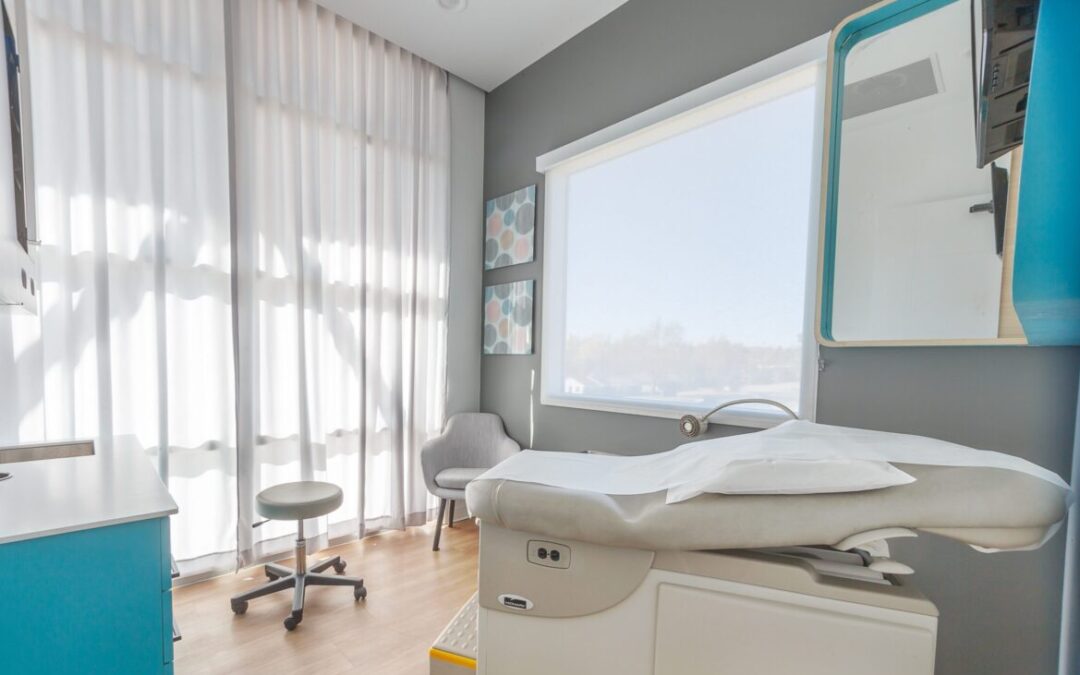In the realm of healthcare, the experience of visiting a doctor, dentist, therapist or any medical professional can often be full of with anxiety and discomfort for many individuals. Whether it’s the anticipation of receiving a shot, undergoing a dental procedure, or simply the general unease that comes with medical consultations, these feelings are common among patients of all ages. However, the environment within which these services are provided can play a significant role in alleviating these anxieties. This is where the concept of healthcare interior design becomes pivotal. By thoughtfully designing the interiors of healthcare offices, it’s possible to create a space that not only addresses the functional needs of the facility but also significantly enhances patient comfort and ease. When patients perceive an office as more comforting, they are more likely to have a positive experience. Here are some key elements to consider in your healthcare office design.
Furniture: Comfort and Support
One of the first elements a patient interacts with in any healthcare setting is the furniture. Comfortable chairs in both the waiting and exam rooms can make a substantial difference in a patient’s level of comfort. In the waiting area, seating should not only be comfortable but also ample, ensuring that patients and their support persons do not have to stand for long periods. Similarly, in the exam room, providing enough seating for a support person is crucial, as the presence of a friend or family member can be a significant source of comfort for many patients.
Lighting: Setting the Mood
Lighting plays a crucial role in setting the mood of a healthcare facility. Harsh, fluorescent lighting can heighten feelings of anxiety and discomfort, creating a clinical and unwelcoming atmosphere. On the other hand, soft, natural-feeling lighting can have a calming effect, making patients feel more at ease. Where possible, maximizing natural light can contribute to a more pleasant and less intimidating environment.
Calming Colors: A Visual Embrace
The color palette of a healthcare facility is another critical aspect of interior design that can influence patient comfort. Certain colors are known to evoke feelings of calm and relaxation. For instance, soft blues, greens, and earth tones can create a peaceful atmosphere, while bright reds or oranges might have the opposite effect. Choosing the right colors for walls, furnishings, and decor can significantly contribute to a comforting environment.
Positive Distractions: Art and Décor
Incorporating art and décor that promote relaxation and calm can provide positive distractions for patients as they wait. Artwork featuring natural landscapes, serene scenes, or abstract designs with soothing colors can help to reduce stress and make the waiting time more pleasant. Elements such as indoor plants or a small water feature can add to the overall sense of tranquility in the space.
Accessibility: Welcoming Everyone
Ensuring that a healthcare facility is accessible to all patients, regardless of their physical abilities, is a fundamental principle of inclusive healthcare interior design. This includes providing wheelchair-accessible entrances, exam rooms, and furniture, as well as considering the needs of those with visual or hearing impairments. An accessible environment is not only a legal requirement but also a critical factor in making all patients feel welcomed and valued.
Privacy: A Cornerstone of Patient Care
Privacy is paramount in healthcare settings. This can be addressed through interior design by creating private consultation rooms, using sound-absorbing materials to reduce noise levels, and strategically placing furniture and partitions to prevent overexposure. Ensuring that patient information is kept confidential and that conversations cannot be easily overheard contributes significantly to a patient’s sense of security and trust.
Safety: A Non-Negotiable Aspect
Patient safety should always be a top priority in healthcare interior design. This includes selecting materials and designing spaces that minimize the risk of accidents and injuries. Slip-resistant flooring, rounded corners on furniture, and secure fixtures are just a few examples of how design can enhance safety. Additionally, the layout should facilitate easy navigation for both patients and healthcare providers, ensuring that emergency exits are clearly marked and accessible.
Healthcare Interior Design from Marathon
Marathon Building Environments understands the critical role that interior design plays in healthcare settings. Our team of experienced designers specializes in creating comforting and welcoming environments that cater to the needs of both patients and healthcare providers. Through our comprehensive healthcare interior design services, we are committed to helping healthcare facilities achieve spaces that not only meet the highest standards of functionality and safety but also promote a sense of ease and well-being among patients. Let us help you transform your healthcare facility into a space where patients feel cared for, comfortable, and confident in the quality of their care.

